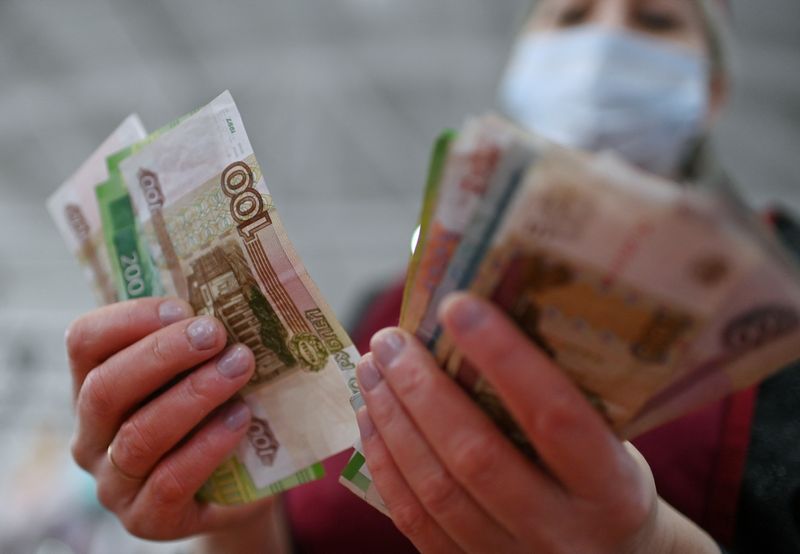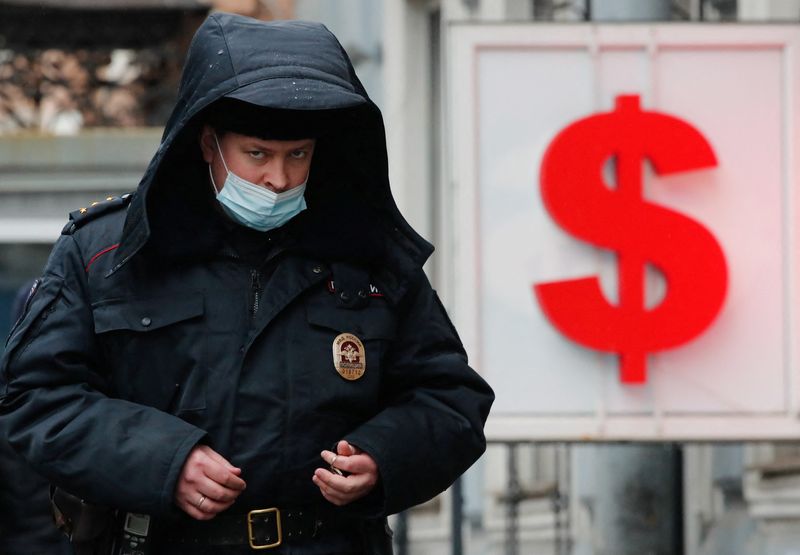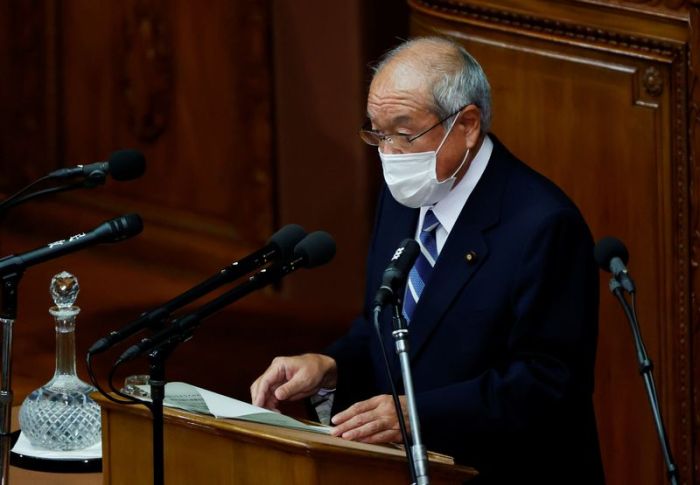MOSCOW (Reuters) – The rouble rebounded from its weakest level in nearly two years to strengthen in volatile trading while Russian stocks slumped on Tuesday after Moscow sent troops to two breakaway regions in eastern Ukraine after recognising them as independent.
Putin’s announcement on Monday drew immediate international condemnation and the West is now expected to announce new coordinated sanctions against Russia.
These could, for instance, target major financial institutions, block Russia’s access to electronics supplies, or curb the operations of its energy firms.
The rouble weakened to 80.97 against the dollar, a level last seen on March 23, 2020, before rebounding to stand 0.9% higher at 79.05 as of 1117 GMT.
That resurgence came as Russia said it would only recognise the regions’ independence within the boundaries that the Moscow-backed separatists currently control, and as Ukrainian President Volodymyr Zelenskiy played down the prospect of a large-scale conflict with Russia.
“There was a headline that just hit that they (Russia) are recognising the borders where they have authority, so markets are rallying on that,” said Peter Kisler, emerging market fund manager at Trium Capital.
“We are not in the clear – but that gives a path to de-escalation.”
The Russian central bank said it was ready to take all necessary measures to support financial stability, and analysts said currency market interventions to limit rouble losses were one of the options on the table.
The central bank did not respond to a request for comment.
Against the euro, the rouble was 0.4% stronger at 89.84, having earlier hit 91.4475, its weakest level since April 2021.
RUSSIA SELL-OFF
On Monday, the rouble had suffered its biggest one-day drop since the outbreak of the COVID-19 pandemic. Russian markets plunged on Western fears that Putin’s moves – to recognise the independence of the two regions collectively known as the Donbass and send in forces to “keep the peace” – might presage a major war.
“It was nothing but a disaster yesterday – news that the conflict with Ukraine in Donbass could be turning hot triggered a massive sell-off in all types of assets,” BCS Global Markets said in a note.
Russian OFZ bonds fell further on Tuesday, with yields on 10-year OFZ bonds, which move inversely to prices, hitting their highest since early 2016.
“The market situation is really tense. Non-residents are likely to cut their positions (in OFZs) despite (lower) prices and buy foreign currency instead … Rouble positions will depend on sanctions,” said Georgiy Vaschenko, head of trading on the Russian stock market at the Freedom Finance brokerage.
OFZ bonds used to be popular among foreign investors due to their relatively high yields, but non-residents have cut exposure to Russia in recent months.
Foreign holdings of Russian government debt – https://fingfx.thomsonreuters.com/gfx/mkt/byvrjxzglve/Pasted%20image%201645522012376.png
Brent crude oil, a global benchmark for Russia’s main export, was up 2.8% at $98.11 a barrel, but that did little to support Russian assets. When oil prices were last near current levels in September 2014, the rouble stood around 40 to the dollar.
The dollar-denominated RTS index fell 3.9% to 1,160.3 points after hitting 1,075.98, its lowest since November 2020. The rouble-based MOEX Russian index was 4.1% lower at 2,913.9 points.
“Today the market direction will be set by the West’s decision on sanctions, and a second round of falling cannot be ruled out,” Sinara Investment Bank said in a note.
(Reporting by Alexander Marrow and Andrey Ostroukh; Additional reporting by Marc Jones in London; Editing by Kim Coghill, Emelia Sithole-Matarise, Alexander Smith and Kevin Liffey)




























